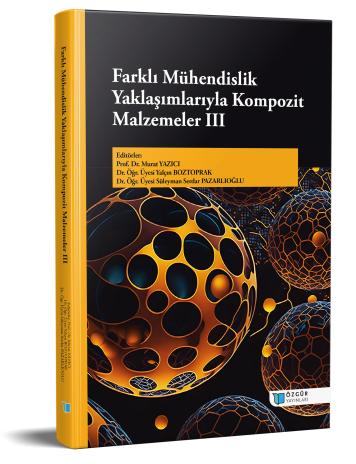
Characterization of Electroless MgB2/SiO2 Composite Coatings
Chapter from the book:
Yazıcı,
M.
&
Boztoprak,
Y.
&
Pazarlıoğlu,
S.
S.
(eds.)
2023.
Composite Materials with Different Engineering Approaches III.
Synopsis
Electroless coatings have a wide application area because they provide a low-cost technique and hard surfaces with a uniform film thickness on objects with rough and complex geometries. With this method, Ni-P and Ni-B coatings, generally known as electroless nickel plating, are produced, and the search for other alternative coating types continues. One of the coating structures that is the subject of research is MgB2. However, MgB2 coatings are generally produced by different and more expensive methods other than electroless coating methods, and the researches is being carried out on the superconductivity and diamagnetic properties of these coatings. The number of studies on the production of MgB2 coatings by electroless coating method is almost non-existent. In this study, using the electroless coating method, unreinforced MgB2 ceramic coating was produced on AISI 1020 steel substrates at a bath temperature of 95°C, and reinforced MgB2/SiO2 composite coatings were produced in the amounts of 5, 10 and 15 g/l SiO2 nanoparticles. The structural and wettability character, mechanical and friction behavior of the produced coatings were investigated, and the effects of SiO2 reinforcements added to MgB2 coatings on these properties were evaluated. In SiO2 reinforced MgB2/SiO2 composite coatings, it has been understood that increasing the amount of SiO2 reinforcement has crystallographically an amorphizing effect on the coatings, increasing the hardness and causing a decrease in the coefficient of friction. In addition, while it was determined that the unreinforced and the reinforced coatings produced had a superhydrophilic character, it could not be clearly determined whether the SiO2 reinforcement had an obvious effect on the wetting angle, since the superhydrophilic structure was obtained in both cases. However, when a comparison is made in terms of the surfaces coated with the steel substrate, the decrease in the friction coefficient and the low contact angle supports each other.

